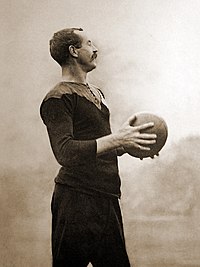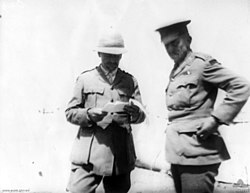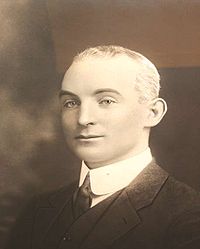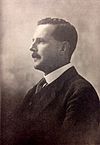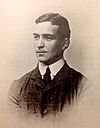
Maurice Jean-Paul Boyau was a French rugby union player and a leading French ace of the First World War with 35 victories, and one of the most successful balloon busters. Balloon busting was the dangerous act of bringing down enemy observation balloons; these balloons were densely protected by anti-aircraft artillery and patrol flights.

Ronald 'Ronnie' William Poulton was an English rugby union footballer, who captained England. He was killed in the First World War during the Second Battle of Ypres.
Cricket in World War I was severely curtailed in all nations where first-class cricket was then played except India. In England, South Africa and the West Indies, first-class cricket was entirely abandoned for the whole of the war, whilst in Australia and New Zealand regular competitions were played for the 1914–15 season but first-class matches were afterwards abandoned. In South Africa, first-class cricket did not recommence until a series of matches against the Australian Imperial Forces cricket team in late 1919, and provincial cricket was not played until a one-off match between Transvaal and Natal in April 1920.

Cecil Halliday Abercrombie was a Scottish international rugby union player, first-class cricketer, and an officer in the Royal Navy. Abercrombie passed out from the Britannia Royal Naval College into the Royal Navy in 1902, and shortly thereafter he served abord HMS Hyacinth in the British campaign in Somaliland, being part of the force that captured "Mullah" Hassan's stronghold in 1904. He would later served aboard HMS Defence at the Battle of Jutland on 31 May 1916, during which he was killed in action.

David Revell "Darkie" Bedell-Sivright was a Scottish international rugby union forward who captained both Scotland and the British Isles. Born in Edinburgh, and educated at Fettes College where he learned to play rugby, he studied at Cambridge University and earned four Blues playing for them in the Varsity Match. He was first selected for Scotland in 1900 in a match against Wales. After playing in all of Scotland's Home Nations Championship matches in 1901, 1902 and 1903, Bedell-Sivright toured with the British Isles side – now known as the British & Irish Lions – that toured South Africa in 1903. After playing the first 12 matches of the tour, he was injured and so did not play in any of the Test matches against South Africa.

William Purdon Geen was a rugby union wing and centre, who represented Wales, and played club rugby for Oxford University and Newport and county rugby for Monmouthshire. He was also invited to play for the Barbarians on several occasions. Geen unsuccessfully trialled for England in 1910, but was selected and played for Wales on three occasions in the 1912–1913 season. Injury prevented him from playing more internationals, and his service in the First World War put an end to his career.
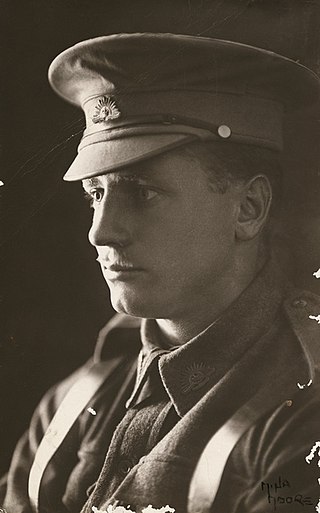
Richard Horace Maconochie Gibbs, a medical student and an Australian rules footballer, played with the Melbourne University Football Club in the Victorian Football League.
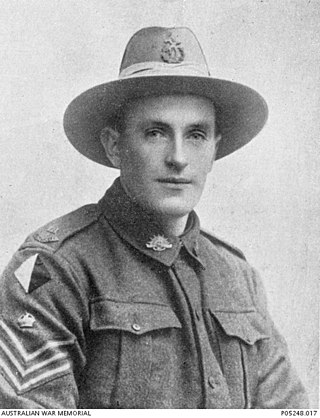
Clifford Charles "Cliff" Burge was an Australian rules footballer who played with Melbourne in the Victorian Football League.
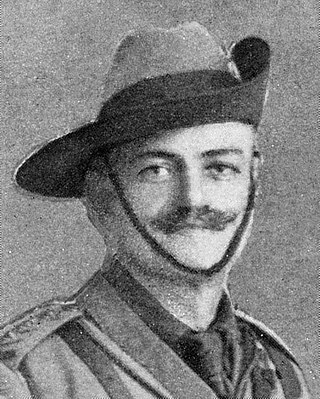
Blair Inskip Swannell was an English-born international rugby union forward who played club rugby for Northampton, and internationally for the British Isles and later Australia. He was invited to tour with the British Isles on their 1899 tour of Australia and then their 1904 tour of Australia and New Zealand. He played a total of seven Test matches on these tours, and scored one Test try – against Australia during the 1904 tour. After settling in Australia, Swannell played a single game for his new home when they faced New Zealand. He was viewed as a violent player, and this made him unpopular with other players. Former Australian captain Herbert Moran said of him that "... his conception of rugby was one of trained violence".
David Dickie Howie was a rugby union player, who represented Scotland and Kirkcaldy RFC. He enlisted as a trooper in the local yeomanry in September 1914, at the start of the First World War. After undergoing training in England, he was commissioned second lieutenant in the Royal Field Artillery in April 1915 and despatched to Gallipoli in August. During the evacuation of Anzac Bay, he contracted pneumonia, and died in Cairo, Egypt, after shooting himself with a revolver while in a state of delirium. He is buried at the Cairo War Memorial Cemetery.

Lieutenant-Commander John Skinner Wilson was a Trinidad-born rugby player, who represented Scotland, United Services RFC and London Scottish FC. He enrolled in the Royal Navy in 1898. He was killed in World War I in the Battle of Jutland, serving as Lieutenant-Commander aboard HMS Indefatigable. He is remembered on panel 10 at the Plymouth Naval Memorial.
Rowland Fraser was a rugby union player, who played as a forward for Scotland, and also for Cambridge University RFC.
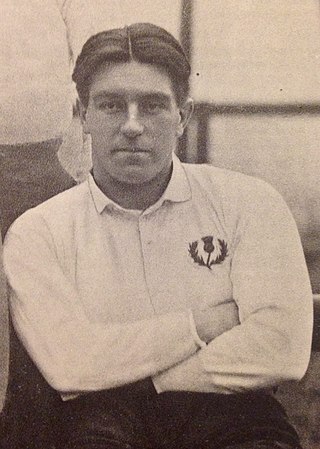
Walter Michael "Mike" Dickson was a rugby union player, who represented Scotland, Blackheath and Oxford. He was killed in World War I.

William "Willie" Middleton Wallace was a rugby union player. He played fullback for Cambridge University RFC and was capped for Scotland in 1913–14.

Arthur "Mud" James Dingle was a rugby union centre and wing, who won three caps for England, and played for County Durham, Hartlepool Rovers and Oxford University.

Francis Nathaniel Tarr was an English international rugby union player. He played centre for the Leicester Tigers and, between 1909 and 1913, won four caps for England, scoring two tries. He also earned three Blues while reading law at Oxford.
Robert Laurence Pillman was an English rugby union player. He was the brother of Cherry Pillman. He played once for England, against France in the 1914 Five Nations Championship. He was killed in action while serving with the British Army during the First World War.

World War I was fought on many fronts around the world from the battlefields of Europe to the far-flung colonies in the Pacific and Africa. While it is most famous for the trench warfare stalemate that existed on Europe's Western Front, in other theatres of combat the fighting was mobile and often involved set-piece battles and cavalry charges. The Eastern Front often took thousands of casualties a day during the major offensive pushes, but it was the West that saw the most concentrated slaughter. It was in the west that the newly industrialized world powers could focus their end products on the military–industrial complex. The deadliest day of the war was during the opening days of the conflict. The Imperial German war council had initiated the Schlieffen Plan which involved multiple armies flooding through the borders of Belgium and France. On August 22, 1914, during the Battle of the Frontiers, five separate French armies engaged the German invaders independently of each other. Across all those battlefields, on that single day, 27,000 French soldiers lost their lives protecting their country.
